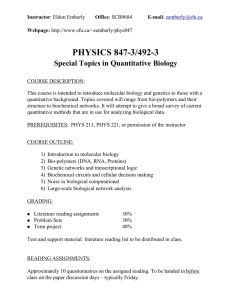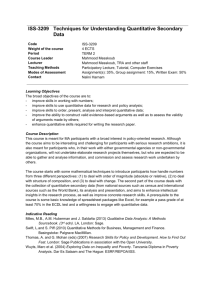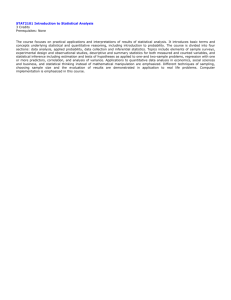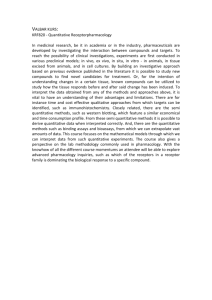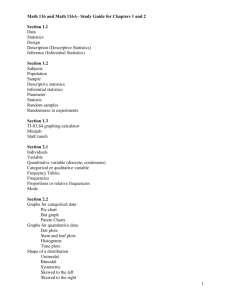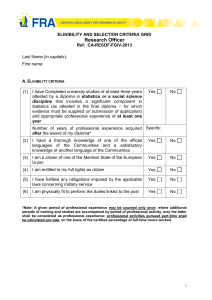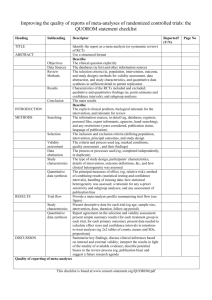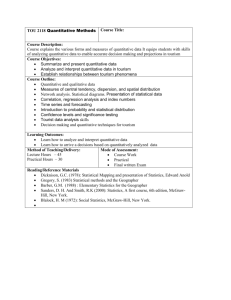Quantitative Data Analysis of Behavioral Graph Coloring Experiments
advertisement
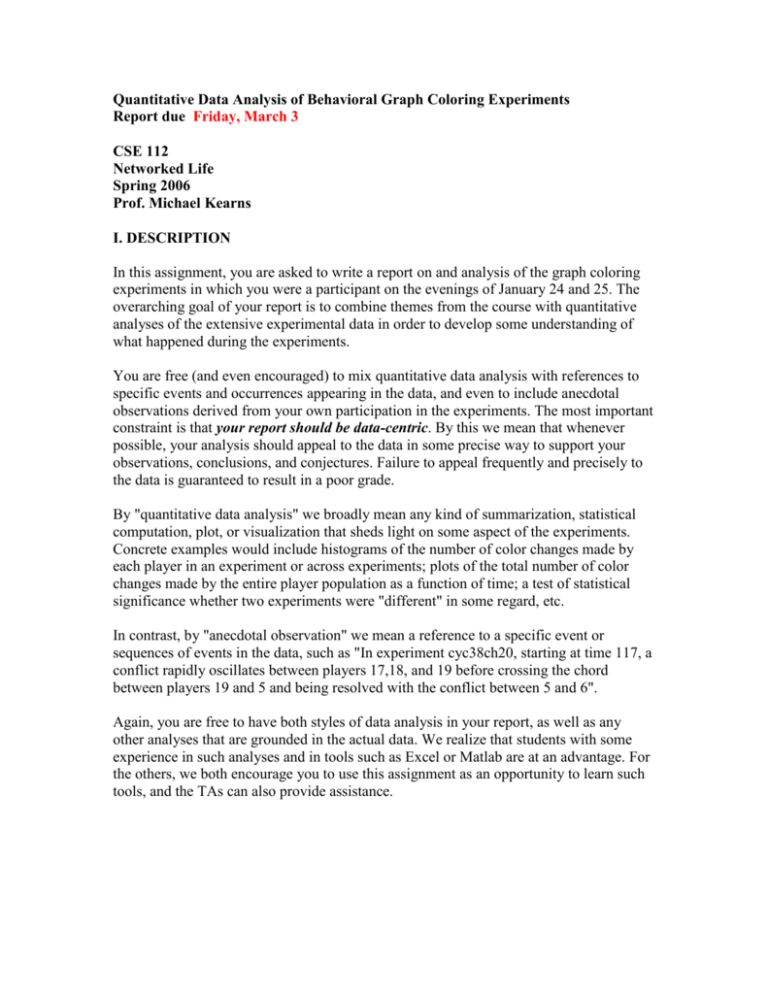
Quantitative Data Analysis of Behavioral Graph Coloring Experiments Report due Friday, March 3 CSE 112 Networked Life Spring 2006 Prof. Michael Kearns I. DESCRIPTION In this assignment, you are asked to write a report on and analysis of the graph coloring experiments in which you were a participant on the evenings of January 24 and 25. The overarching goal of your report is to combine themes from the course with quantitative analyses of the extensive experimental data in order to develop some understanding of what happened during the experiments. You are free (and even encouraged) to mix quantitative data analysis with references to specific events and occurrences appearing in the data, and even to include anecdotal observations derived from your own participation in the experiments. The most important constraint is that your report should be data-centric. By this we mean that whenever possible, your analysis should appeal to the data in some precise way to support your observations, conclusions, and conjectures. Failure to appeal frequently and precisely to the data is guaranteed to result in a poor grade. By "quantitative data analysis" we broadly mean any kind of summarization, statistical computation, plot, or visualization that sheds light on some aspect of the experiments. Concrete examples would include histograms of the number of color changes made by each player in an experiment or across experiments; plots of the total number of color changes made by the entire player population as a function of time; a test of statistical significance whether two experiments were "different" in some regard, etc. In contrast, by "anecdotal observation" we mean a reference to a specific event or sequences of events in the data, such as "In experiment cyc38ch20, starting at time 117, a conflict rapidly oscillates between players 17,18, and 19 before crossing the chord between players 19 and 5 and being resolved with the conflict between 5 and 6". Again, you are free to have both styles of data analysis in your report, as well as any other analyses that are grounded in the actual data. We realize that students with some experience in such analyses and in tools such as Excel or Matlab are at an advantage. For the others, we both encourage you to use this assignment as an opportunity to learn such tools, and the TAs can also provide assistance. II. DATA A variety of raw and processed forms of the experimental data will be provided to you for the assignment. More details on this data will be provided in the class lecture of Feb 16, in revisions to this document, and in supplementary documents. III. SAMPLE THEMES AND QUESTIONS The specifications for the kinds of issues you discuss in your analysis have been deliberately left open-ended. There is no single "right" analysis of the experiments. Below we provide a sampling of possible issues to touch on; please do not treat this as a "laundry list" of items to say something about, but rather simply food for thought. Your analysis should focus on whatever you think were the most interesting aspects of the experiments, which may or may not appear on this list. Did the three main dimensions of variation across the individual experiments --graph structure, information view, and compensation scheme --- influence the outcomes of the experiments, and/or the collective and individual behavior of the participants? If so, in what ways? What generally can you say about the commonalities and differences between the behavior of individuals in the experiments? Is there any evidence for "learning" (improved or changed behavior over time) by either individuals or the population? IV. LENGTH AND GRADING CRITERIA While there is no strict upper or lower limit on the length of your report, we expect that most reports will be between 10 and 15 standard-format pages (similar to these pages), including all figures, diagrams, plots, tables, etc. Grading criteria will include the following: Accuracy and truthfulness of the findings that you claim, and the quality and precision of the empirical support you provide for them Creativity and originality in the questions and issues you raise about the experiments and their outcomes Creativity and originality of the quantitative analysis you perform, and of the ways you process, visualize and display the results

